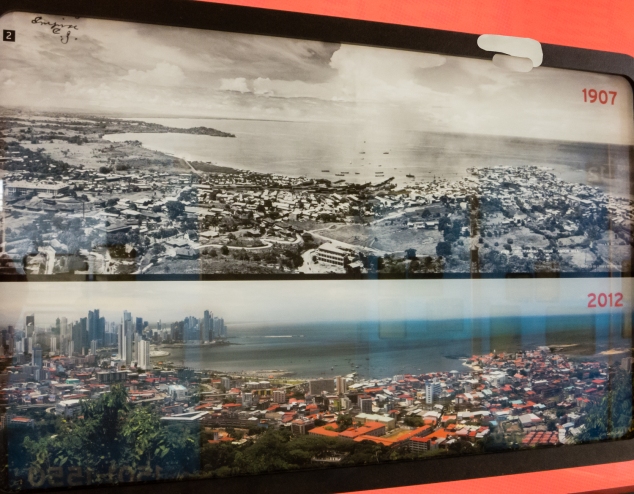
BioMuseo — Panoramas of Panama City in 1907 during the American construction of the canal and a century later; Panama City, Panama
Panama City (Spanish: ciudad de Panamá) is the capital and largest city of the Republic of Panama. It has a population of 880,691, with a total metro population of 1,440,381, and is located at the Pacific entrance of the Panama Canal, in the province of Panamá. The city is the political and administrative center of the country, as well as a hub for international banking and commerce. — Wikipedia

Panorama of new skyscrapers from Avenida Balboa-Cintra Costera to Punta Pacifica (2015); Panama City, Panama
The city of Panamá was founded on August 15, 1519, by Spanish conquistador Pedro Arias Dávila. The city was the starting point for expeditions that conquered the Inca Empire in Peru. It was a stopover point on one of the most important trade routes in the history of the American continent, leading to the fairs of Nombre de Dios and Portobelo, through which passed most of the gold and silver that Spain took from the Americas.
On January 28, 1671, the city was destroyed by a fire when privateer Henry Morgan sacked and set fire to it. The city was formally reestablished two years later on January 21, 1673, in a peninsula located 8 km (5 miles) from the original settlement. — Wikipedia
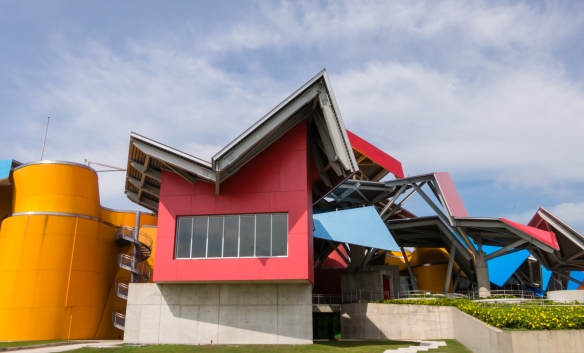
BioMuseo — Panama, Bridge of Life; building designed by Frank Gehry; Amador Causeway, Panama City, Panama
The BioMuseo (BioMuseum), or La Puente de Vida (Bridge of Life), Frank Gehry’s first project in Latin America, opened in 2013. Under the jumble of multi-colored, irregularly shaped roofs, eight pavilions feature exhibits drawing on research by the Smithsonian Tropical Research Institute.
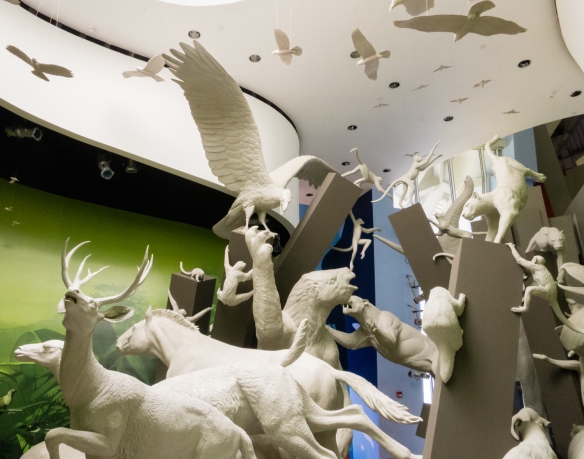
BioMuseo — “Worlds Collide” (when the isthmus emerged geologically, Panama became a living bridge); Panama City, Panama
Three million years ago, the Isthmus of Panama emerged from the oceans, dramatically changing the world’s climate and biodiversity by becoming a land bridge between Central America and South America. A great many species crossed it, embarking on an unparalleled journey. The story of the intertwining of humans and nature over the past 15,000 years is told in an open gallery. Pictured below are two displays that show the crops indigenous to Mexico and South America — foods that are very common now in the U.S. and around the world.

BioMuseo — “The Human Path” (foods with origins in Mexico); Panama City, Panama

BioMuseo — “The Human Path” (foods with origins in South America); Panama City, Panama
A UNESCO World Heritage site, Casco Viejo (Old City) is an historic district that was established in 1673 by the Spanish colonialists and the Catholic Church, following the destruction of the original Panama City in 1671 by pirates. At one time, the Old City was one of the richest and most sought after areas to reside in the Americas, but the area experienced decades of neglect from the 1950s. Many of the buildings were meticulously restored and now serve as museums, restaurants, shops and luxury residences. It is also common to see some buildings that remain in a state of complete ruin and renovated structures located next to humble homes that visually tell the story of the area’s past.

Catedral de Nuestra Senora de la Asuncion (built between 1688 and 1796) — at the Plaza de Independencia, Casco Viejo (Old City); Panama City, Panama
Built between 1688 and 1796 and standing amongst the ruins, Panama CIty’s stately cathedral is one of the Old CIty’s best preserved buildings. The interior is characterized by the 1884 marble altar, religious paintings, and beautiful stained glass. The bell towers are decorated with mother-of-pearl from the Pearl Islands, and the bells of the let tower are origianlly from the city’s first cathedral in Panamá Viejo.
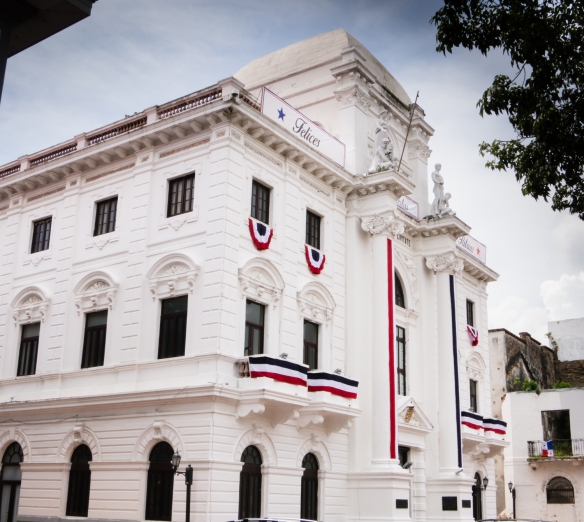
City Hall — at the Plaza de Independencia, Casco Viejo (Old Ciry); Panama City, Panama
The bunting on the buildings is in honor of Panama Independence day, 3 November (1903).
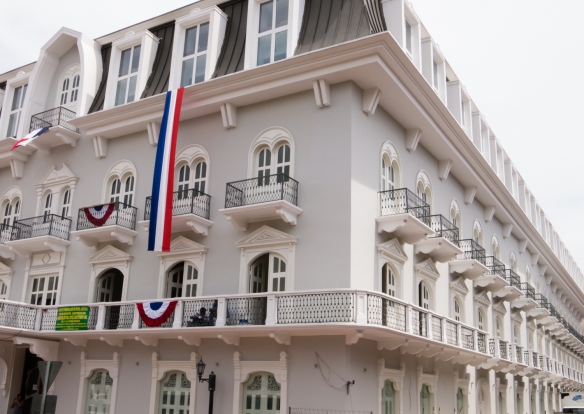
Contemporary design in the Colonial style — at the Plaza de Independencia, Casco Viejo (Old City); Panama City, Panama
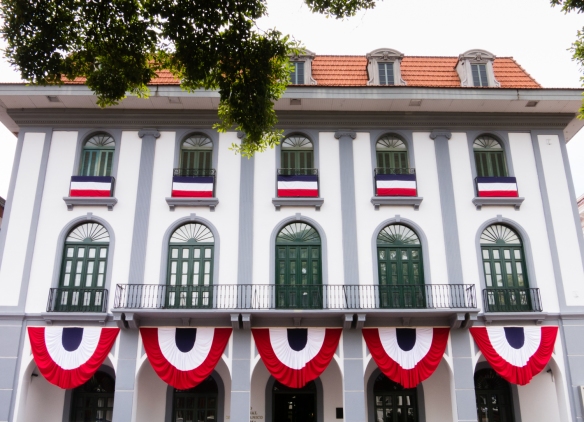
Museo del Canal Interoceanico de Panama (Panama Interoceanic Canal Museum) — at the Plaza de Independencia, Casco Viejo (Old City); Panama City, Panama
Museo del Canal Interoceanico (Panama Canal Museum) was once the Gran Hotel and then the French canal company’s headquarters. The facility presents exhibits detailing the Panama isthmus from the pre-Columbian period to the arrival of the Spanish, all the way to the present. The three primary historic events concerning the canal are explored: the initial attempt by the French in the 1880s; the completion of the canal by the United States in 1914; and the return of control of the Canal Zone to Panama in 1999.
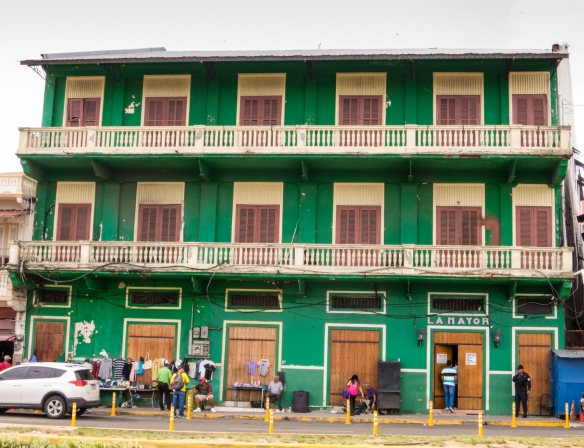
Apartment building and retail shops on the street level; Panama City, Panama
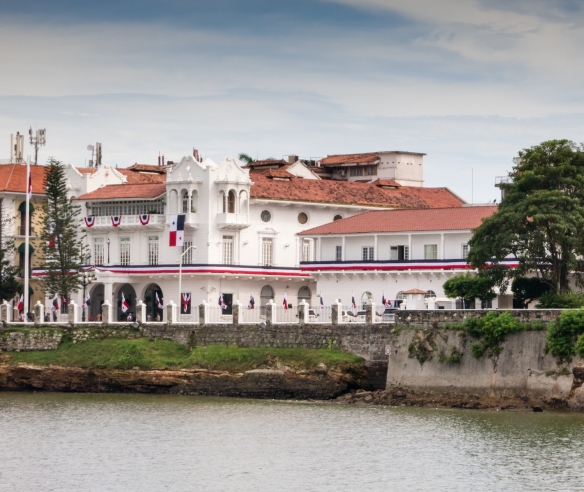
Presidential Palace; Panama City, Panama
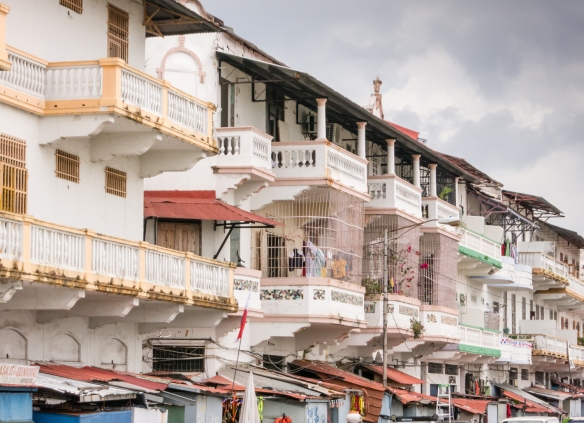
Traditional housing across the bay from the Presidential Palace; Panama City, Panama

Rich,
Looks like a prosperous place for a Third World country.
My eccentric Uncle Jack went down to Panama to see the canal built. He was quite young at the time and got some sort of simple job working on it. Much later, after graduating from Harvard, he took an apartment along the Hudson River in NYC where he could watch the George Washington Bridge being built.
Paul
LikeLike